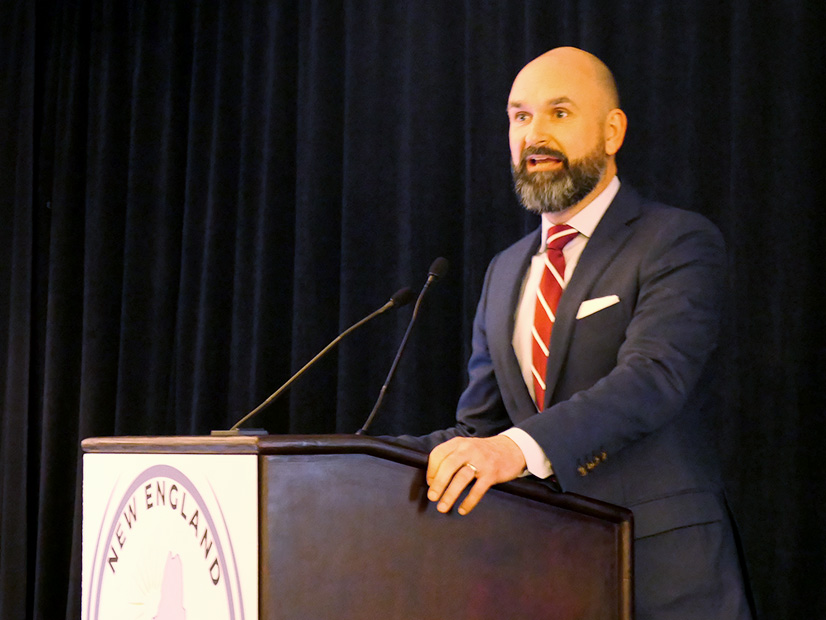As the Bonneville Power Administration prepares to join Markets+, the agency hopes to complete the initial program governance setup and define its commercial model for market participation in early 2026, though questions persist about the timeline and market seams.
BPA provided the update during a Dec. 4 day-ahead market participation workshop. BPA committed to SPP’s Markets+ in May 2025, and the power agency is to begin participating in the day-ahead market in October 2028. (See BPA Chooses Markets+ over EDAM.)
But several key steps remain, according to Nita Zimmerman, acting vice president of bulk marketing at BPA.
“The policy direction is to pursue Markets+, but several important steps still remain, which include a rate case, a tariff proceeding, a National Environmental Policy Act analysis and the successful negotiation of a Markets+ implementation agreement,” Zimmerman said.
Another step includes defining BPA’s commercial model framework. While the network model deals with physical elements, such as electrical nodes, metering and transmission elements, the commercial model connects those physical elements to the financials, explained Sara Eaton, senior analyst at BPA.
“The commercial model is creating that mapping between the network model, the physical and then the financial,” Eaton said. “So, when we say ‘commercial model,’ it’s going to have settlements impacts, and that’s why it’s really important to get it right and to start those conversations early.”
To define the commercial model, BPA must answer questions about how entities interact in the market, how resources and loads are modeled, and how information is shared among market participants, said Libby Kirby, BPA’s Markets+ program manager.
“A lot of those framework questions drive all of the downstream work that ends up happening,” Kirby said.
“So, once we have gotten some of those commercial model framework questions answered, we will move into some of those more formal work streams — developing software, developing processes, etc. — as well as getting into our internal testing,” Kirby said.
According to BPA’s presentation slides, the agency aims to complete the initial governance program setup by March 17, and the commercial model by March 31, 2026.
Other preparations include aligning the agency’s provider-of-choice contracts with Markets+ and preparing the exit from the Western Energy Imbalance Market.
Another issue is the market seams expected to arise from the split between Markets+ and CAISO’s Extended Day-Ahead Market. (See SPP Markets+ Cruising Through Early Development.)
Steve Greenleaf, senior director of regulatory affairs and policy at Brookfield Renewable, asked whether BPA plans future workshops on seams or if those concerns are limited to SPP.
Kirby responded that BPA does not view seams as an “SPP-only issue.”
“I think we all have a stake in the outcome, and so I don’t think we expect to just say, ‘Yep, [SPP is] going to do it all, and we have no interest in that,”’ Kirby said. “I think we have lots of interest and probably some opinions that we’d like to share with them.”
She noted SPP plans to host a symposium on seams in February.
“I don’t know that there’s an explicit full road map … yet that sort of bridges both sides, but I think that is something that [SPP is] considering, and that we very much know that we will continue to poke at,” Kirby said.
‘Weakest Link’
Henry Tilghman, a consultant with the Northwest & Intermountain Power Producers Coalition, questioned whether BPA can keep its Markets+ implementation timeline, given that certain upgrades are still pending.
“The reason I’m asking is a chain is only as strong as its weakest link, and the [Automatic Generation Control] upgrade has been pending for at least a year and a half,” Tilghman said. “And for some reason, I still can’t get a timeline for when that’s going to be completed.”
“What is your confidence level in delivering on the schedule given that there is a very important software upgrade that doesn’t have any timeline to complete, as near as I can tell,” Tilghman said.
Kirby described her confidence level as “decent.”
“I think it’s too early to be too confident. It’s too early to be too pessimistic,” Kirby said. “Right now, we are making plans to meet it. Right now, we think we can meet it, including with AGC. But I think obviously there are risks. There are risks for workload; there are risks if we go live and [market participants] aren’t ready, what do we do? We have to have contingency plans. We have to have backup plans. I think that is all part of the conversation right now.”
